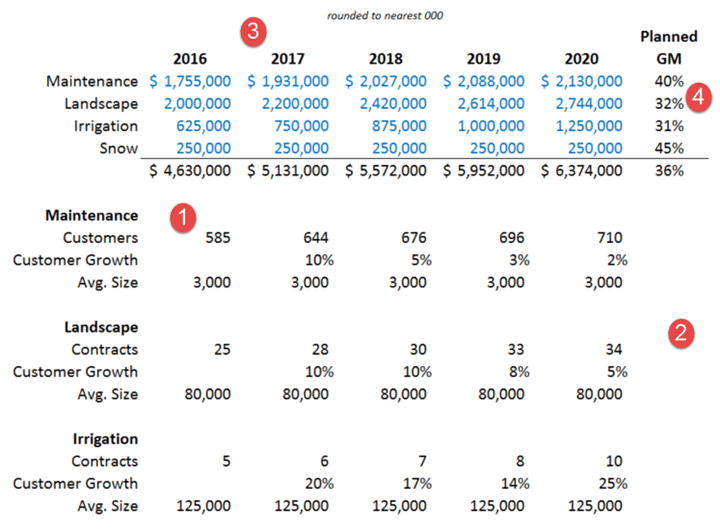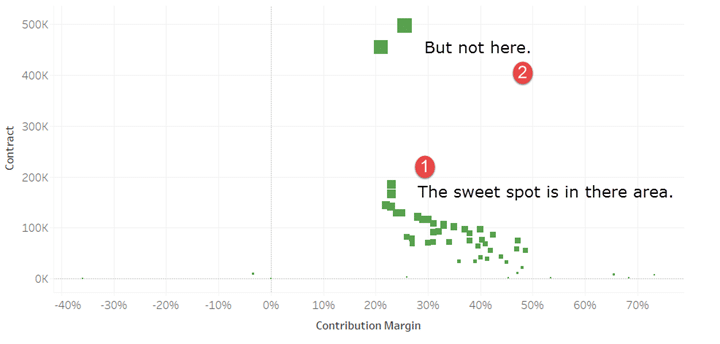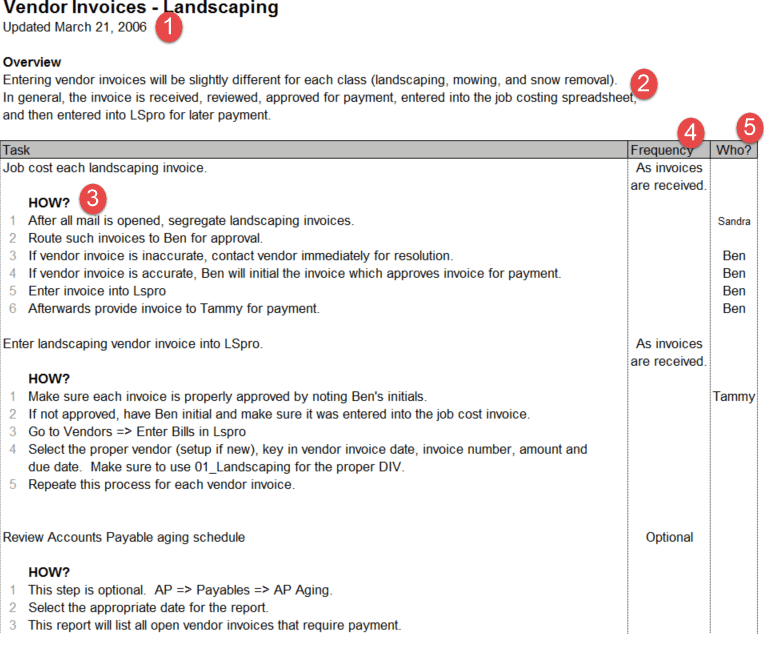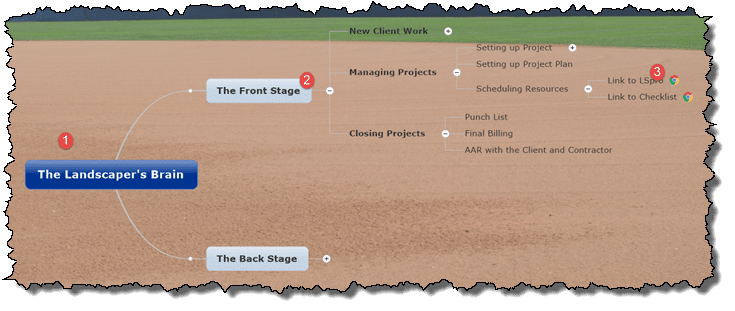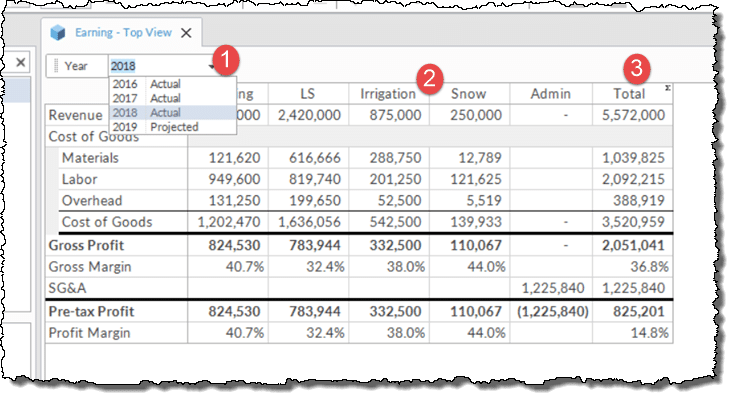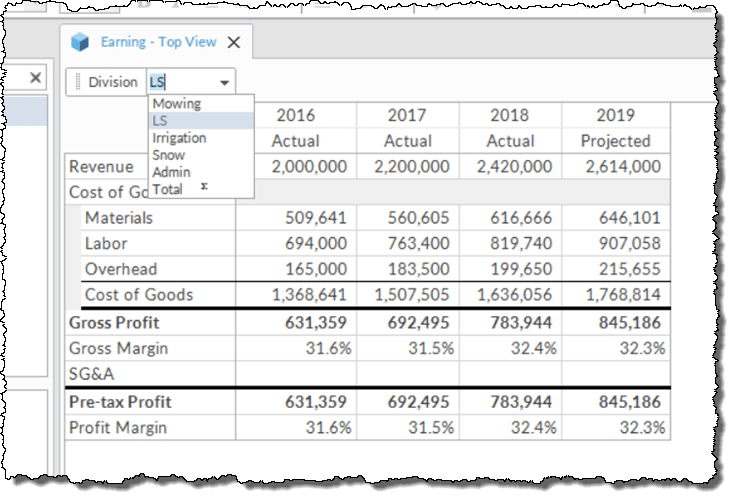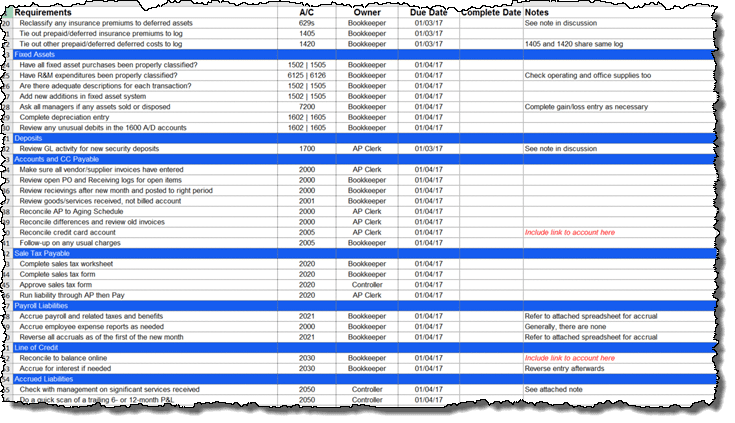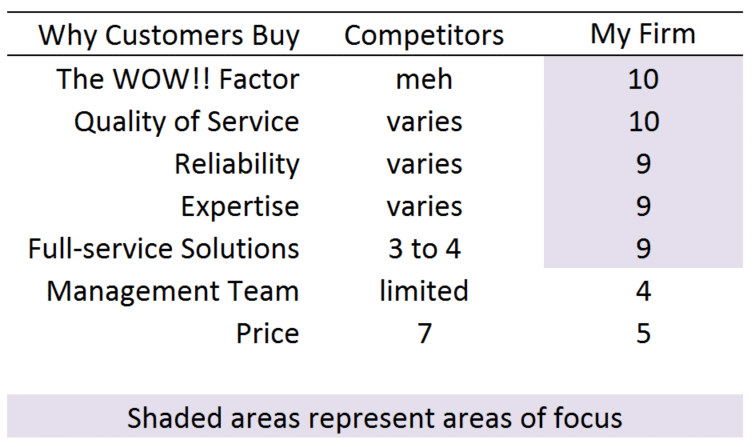In college, I had the 2 greatest jobs on the planet. I got to work outdoors, get dirty, get a great tan and work with some fun people.
One job was mowing the greens and fairways at Kirksville Country Club located in the frigid North Pole of Missouri.
My other job was running the mowing division of Nurseryland, Inc. Well, it’s true, but we only had 13 lawns, and since I was a pro on the greens and fairways, I was pegged as the mowing guy, a team of just one person.
When I wasn’t mowing, I got to work with one of two small landscaping crews. That was fun. It was hard, but I loved it. Back then, I wondered, “Is there good money in this?” Little did I know I’d get a front-row seat on helping a few landscapers design and doze their way to better profits.
The Entrepreneurial Seizure
Michael Gerber is famous for stating why small business owners start a business. Their decision stems from an entrepreneurial seizure. They rationalize they can be successful because they are skilled in their craft. And then they learn a truth that hits them like a dozen prickly barberry bushes all at once:
- They don’t know how to hire talent for the long haul
- They can’t manage multiple jobs
- They can’t keep 100% of their customers happy (add general contractors to the list)
- They have no clue what accounting is
- Lack of accounting knowledge means they can’t manage the most important financial tool–the weekly WIP report
- They realize managing cash is nothing like managing personal finances at home
I’d keep adding to the list, but I’d run out of space.
Let’s Do Some Digging
In no particular order, I’m going to reveal what the best business coaches of landscapers do (at the end of the post, I’ll share who my favorite coaching business is in this niche).
I’m calling this Profitscaping 101. These are simple tools anyone can master. Do you need a coach? No. But you’ll get traction faster if you hire one.
Dream Big Baby
When I take on any client (generally, businesses with revenues of $10 million or more), one of the first exercises we work on is taking a look at the future. Nearly every business I work with wants to grow. Accordingly, we start looking at whether they have the ability to 2x their revenues and profits over 3 to 5 years.
Let’s assume we’re working with a landscaping firm with mowing/maintenance, landscaping, irrigation installation, and snow removal divisions.
All we’re doing for right now is plotting the next few years on the top line by division. Here’s how I do this:
- I start with the most recent year of actual data that can be pulled from the firm’s accounting or costing system.
- Then we start moving forward in time. In some cases, we’ll look at the number of customers and determine an achievable growth rate. For landscaping, customers are generally meaningless. Instead, I’m focusing on the number of contracts. You’ll notice I did not change the average transaction size (dollar spend). Forget the inflation factor–just use today’s dollars. Why no change in the average transaction size? Because we’re not changing the business model. And even if the firm gets some Hermann Simon religion, we’ll address pricing strategies later.
- Our revenue canvas showing projections in the future gives us a chance to ask, “Can we do this?” This is the starting point for the next steps to make these projections real.
- Finally, and out of habit, I like seeing typical gross margins for each division. First, the numbers are super easy to pull from accounting or costing. And, we can start doing some cowboy arithmetic with those key numbers since we know pre-tax profit margins should range from 8 to 12 percent.
Don’t skip this step. I recommend doing a reboot of this exercise at the beginning of every November when the bulk of the landscaping season is over (I’m in the Midwest).
Know Thy Customer
I don’t work with many landscapers due to their size, but I’ve learned one truism about them. If a customer walks, breathes, talks, and can write a check, the landscaper is open for business.
I hate that mentality, and yes, hate is a strong word.
When I do the exercise above, I do some other quick analysis out of intellectual curiosity. Below is a simple scatterplot of every project completed in the past 18 months. The x-axis shows the contribution margin (direct materials, direct labor, and assignable overhead). The y-axis is contract size after all change orders.
If you were the consultant to this landscaper, how would you advise them? Would you question the large-dollar contacts? Why?
If this landscaper only focuses on their sweet spot of contracts, do you think they are a more sellable firm down the road?
Bottom line, know thy customer, love thy scatterplot.
Process Documentation
One of the biggest frustrations landscaping owners encounter is a lack of consistency which hurts customer and/or general contractor satisfaction levels. Lack of consistency means:
- The owner plays too many roles (marketing, selling, supervising)
- They are fixing all the problems on all contracts
- And they can never seem to take time off
Lack of consistency is a symptom of a bigger problem. Employee training is nonexistent because there is no, “My Landscaper’s Way of Doing Business Making me Bucketfuls of Money.”
This leads to my first rule when finding a business coach to help you. Never hire a coach unless they have 3 ways of solving the same problem. Many have one trick to solve a problem. Don’t hire them. They are dogmatic czars. You want the coach who can provide the right tool for your situation. That’s true for developing repeatable systems and processes with predictable results.
Take the example below for vendor bill processing. The back office is normally a mess in small landscaping firms. Achieving consistency is as simple as creating some well-designed checklists.
I rarely follow the same checklist methodology from client to client because each person and business is different. However, you will find some commonalities such as:
- The last time the checklist was updated, and there should be an owner of this checklist/process.
- A brief overview. Note that an overview can be a narrative, audio, video, or an infographic. Be creative.
- A well-designed checklist should be fewer than 6 steps. If you have more, that process will be ripe for errors and inconsistencies. If the checklist needs to be longer, then chunk it (break it down into smaller parts). I also like to explain ‘how’ in a checklist because it makes the trainer’s job easier.
- Each step needs a frequency.
- And each step needs the owner of the step–the fewer the better.
I already know what you are thinking. You want to see a flowchart.
I typically use post-it notes to document workflows, but here’s the documented process below for the checklist above:
I cannot emphasize this enough–have one place where you have you have a list of every documented process in your business. You can use a mindmap like I’ve done before. My preference is using Smartsheet.com, and you can ask me why in the comments section below.
Before moving on, let me make a few quick comments:
- You need a place for all of your processes. That’s a given, but how about one file where you have a big checklist of every process such as the example above? You can do this in Trello, Smartsheet, or Google Sheets. Don’t get hung up on the tool. Remember, function over form. Fight over form later.
- I like to delineate processes between the front stage and the backstage. I love sports, so in some of my work, I use on-field/off-field. Chunking processes like this make the business feel less overwhelming.
- As you drill down to the process, make sure you have a link to the process documentation, checklist, or tool.
Hey, Your Financials Stink
Your financials are killing me. That’s because you are a victim of push-button financials coming straight from your accounting system. That’s a shame because those P&Ls, balance sheets, and cash flow reports need to be meaningful–and the ones from any software package simply stink. Yeah SAP, your built-in reports are terrible too.
We could spend more than 10,000 words going through a well-designed report. I’m not going to do that to you. Let’s stick with the landscaper above. Here’s what I want the first page of reporting to look like when I meet with the owner and her team each quarter.
I believe in the 60-second rule–in 60 seconds or less, you should know exactly if you are winning or losing. If the numbers do not make sense, then that’s where drill-down capability comes into play. In the case above:
- I want the ability to select any timeframe I want–year-to-date, last quarter, season-to-date, etc.
- I like seeing the profitability by division.
- Obviously, we need a roll-up.
But we’re not done. I want more filtering abilities.
In the snapshot above, I can now just focus on one division at a time. Behind this view, we can:
- Examine by month
- Examine by month by general ledger account
- Compare actuals to plan
There should be no limits to what you can do with your reporting. Find an expert financial modeler using a tool that can be integrated with your accounting system.
Meaningful Financial Statements Start With Accurate Numbers
Meaningful reporting is worthless if the numbers are inaccurate. There’s only one way to ensure the numbers are right. Your back office accountant (preferably someone with job costing experience) needs to follow a month-end closing checklist. The checklist includes a line item for every single balance sheet general ledger account. There are also steps for analyzing the P&L.
I started my practice in 2001, and one of my first clients was a specialty contractor. We finished the financials the last calendar day of the month. The secret? A simple checklist similar to the screenshot below:
Just because you have someone to help you create a month-end closing checklist doesn’t mean it will be followed. Since 2001, I’ve encountered these types of accountants when it comes to the month-end closing checklist:
- They get trained on it, love it, and take ownership of it making it better and better each passing month
- They get trained on it and just go through the motions and do not try to enhance processes going forward
- They get trained on it and lack the humility to keep following it–they tend to do their own thing taking shortcuts–the end result is inaccurate financials
Before moving on, two of the most important closing checklist items in landscaping revolve around the WIP report. When landscapers work on contracts lasting 2 or more weeks, WIP reporting is critical.
Let’s take the example below.
In the example above, the landscaper has 5 jobs in process at month-end. I like starting the summary page of a WIP report showing the original contract total along with planned gross profit (after direct materials, labor, and assignable overhead).
Next, the landscaper needs costs to date along with the expected costs to complete the project. This will reveal the gap between planned and projected gross margin.
The very end of the summary shows whether or not the landscaper is playing with house money or playing the role of the bank. Notice project 2 is underwater at $22,852. That means we have paid more than we have collected. Never let that happen. We always want to be ‘in the money’ and that’s very doable based on how contracts are written.
I don’t show the journal entry, but it’s in a separate sheet created by the numbers in this workbook.
I will sound like a broken record–the WIP report is one of the most important financial reporting tools at the landscaper’s disposal. That’s especially true when projects span 2 to 4 weeks in length. The better practice is to update the WIP report each Friday night for review.
Don’t be like most landscapers who say, “Oh Mark, I don’t need to do this. I just keep track in my head,” Yeah, right. Show me your bank account. Show me how many days you’ve taken off during the busy season. Show me a landscaper using her WIP report on a weekly basis, and I’ll show you a highly profitable landscaper who functions as a CEO.
Last Thoughts
I like symmetry along with bookends. Accordingly, I want to come full circle by picking up on how we got started. At the outset, the focus was on the big picture. Let’s finish with a broader picture.
As you design your way to more profits, I’d like for you to consider your competitor scorecard similar to the one below.
The competitor scorecard is easy to figure out and should be self-explanatory. If the landscaping firm desires to grow, it needs to know the obstacles. I like to do this quick analysis by listing why customers buy from the landscaper. While it’s subjective, grade yourself against your competitors. If you need to, create separate columns for individual competitors.
Do you focus on strengths or weaknesses? It depends. Who are you trying to be? Be that person, and be good and strong at the same time. That’s your focus.
You’ve got work to do, so get to it. And that reminds me, I happen to know the perfect coaching organization to help you–Gritt Business Coaching.
Gritt Business Coaching is new, but they are already great. And here’s a prediction–they will become one of the top small business coaching firms globally in the next few years. Get your landscaping firm back on track by using a coaching organization who can take you to the promised land.


